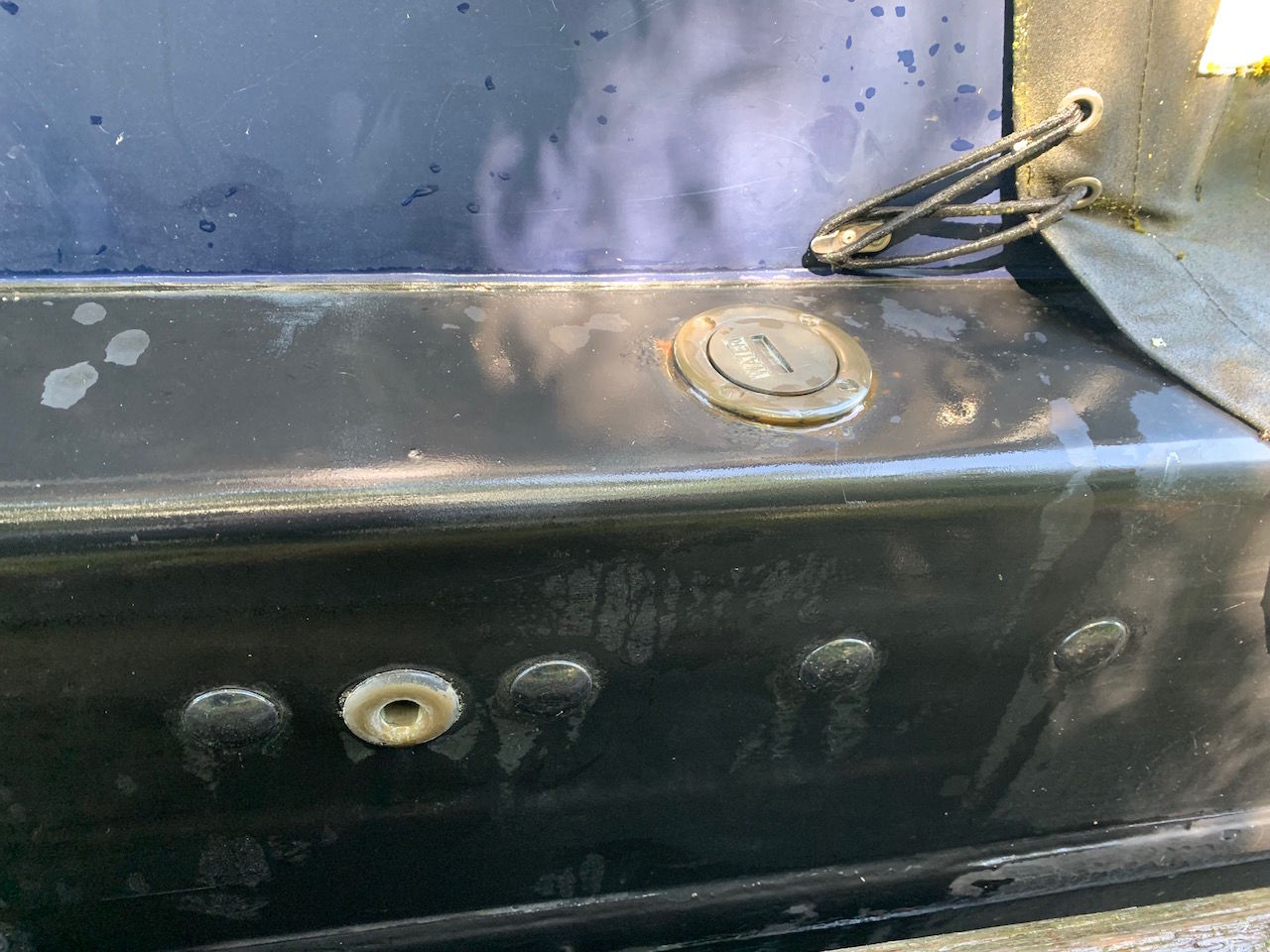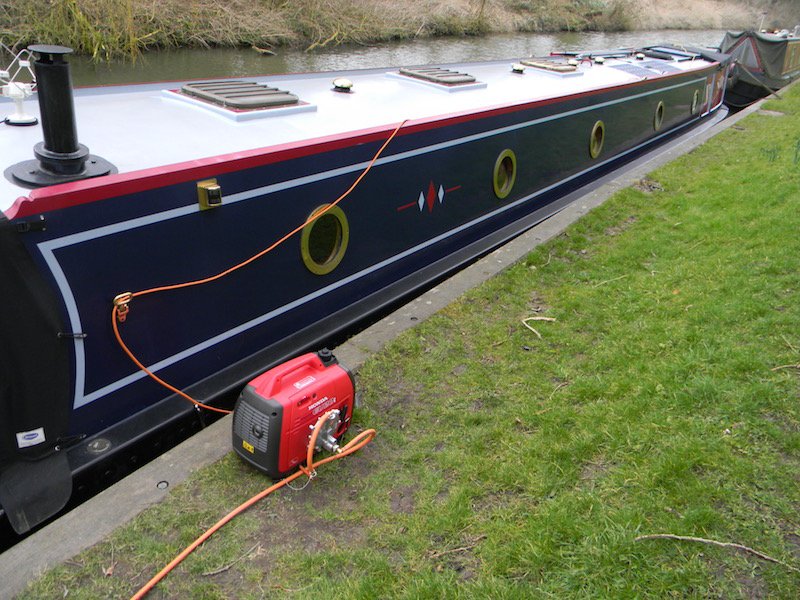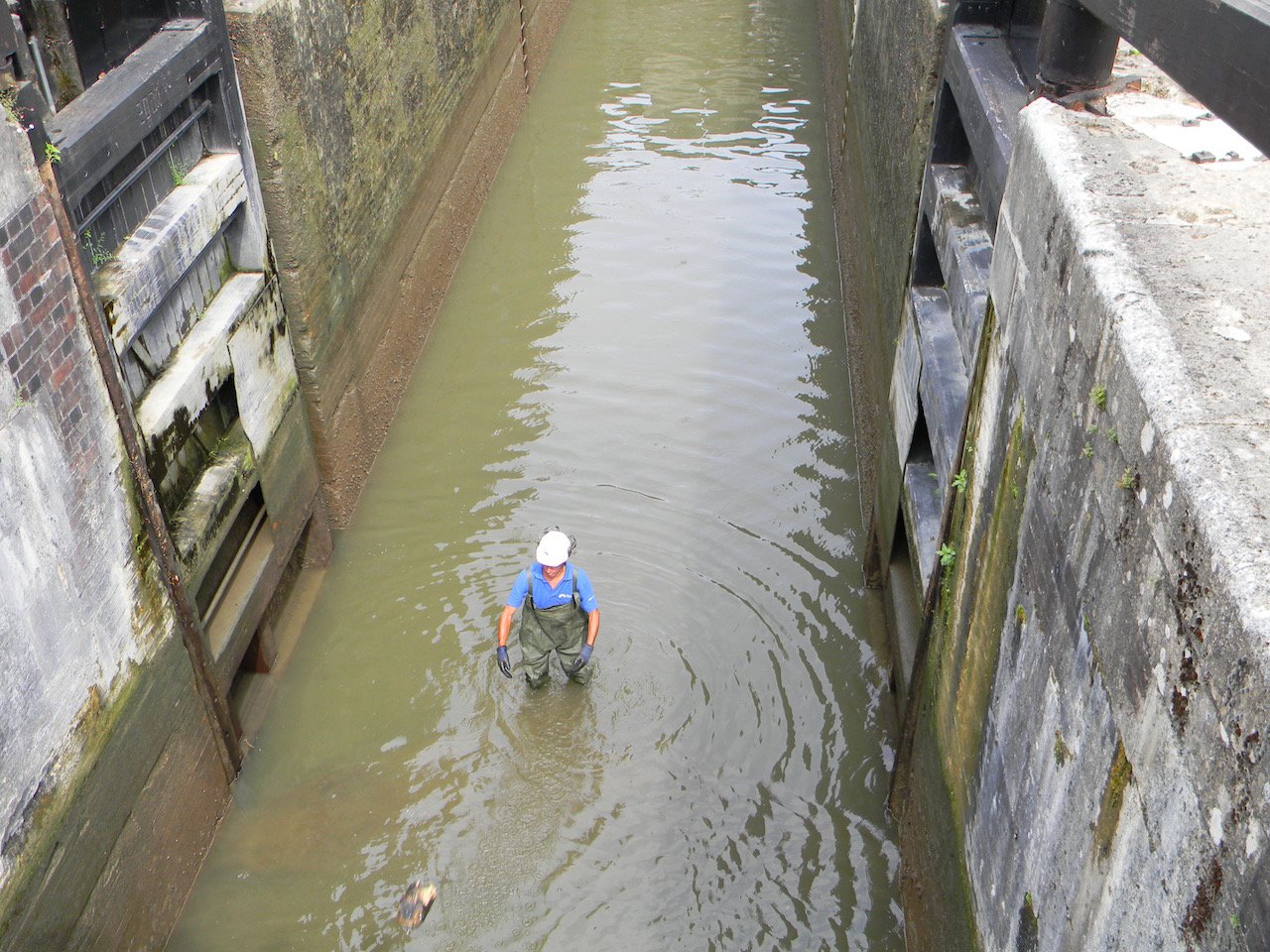-
Posts
70 -
Joined
-
Last visited
-
Days Won
1
LankyStreak last won the day on February 5 2016
LankyStreak had the most liked content!
Profile Information
-
Gender
Male
-
Location
Bath
-
Boat Location
K&A
Recent Profile Visitors
1,631 profile views
LankyStreak's Achievements
Engager (3/12)
17
Reputation
-
Thanks for your reply David, and I agree with everything you say. However there have been objections to CRT's application. If you click on the 'comments' section of the application page in your link you will see 25 comments have so far been submitted. One of those is an objection from Planning Sphere, a planning consultancy acting for Mr Maidment, Mrs Harris & Wilcot Trust. The objection includes a 3 page rebuttal of the CRT's application along with several photographs, and a solicitor's report from Mogers Drewett which states that the CRT has a duty to upgrade the bridge to accommodate modern farm traffic. My point is that if the bridge was originally given a weight limit, as I believe it probably was, which was reasonable when the bridge was built, surely CRT cannot be obligated to keep upgrading the bridge and increasing its weight limit as agricultural vehicles become bigger and heavier, which is what the solicitor is stating.
-
There is currently a listed building application for Ladies Bridge, the ornate and attractive bridge 120 over the K&A Canal at Cocklebury Farm, Wilcot. This bridge doesn't carry a public road, just a track that presumably linked a farm when the canal was built. The bridge now carries a public bridleway used by walkers, anglers, cyclists and horse riders. The application is by CRT to install bollards 2 metres apart near both ends of the bridge to prevent inappropriate vehicles (presumably agricultural vehicles) from overloading the bridge and causing damage. This seems fair enough to me. I've had a CRT mooring on the offside of the canal adjacent to this bridge for six years and I've never seen a vehicle attempt to cross the bridge. The application has generated some opposition, most notably from local landowners who claim it is their legal right to cross the bridge in a vehicle of any weight, without limit. The landowners even quote a legal opinion which states: "The roads which existed before the canal was constructed would have been able to support any weight of vehicle. Since the duty on the Trust [CRT] is, pursuant to s27 of the 1794 Act [the Kennet & Avon Canal Act], to provide an alternative which was as convenient as the road which had been cut through, it must upgrade Ladies Bridge to accommodate modern farm traffic." Can that really be right? Is the CRT obligated to upgrade a beautiful and listed canal bridge that was built to cope with the farm traffic of 200 years ago so that it can carry enormous 21st century farm machinery should the landowner decide to exercise their right to do so? This would inevitably mean replacing the ornate stone bridge with a modern concrete and steel structure at huge expense. I suspect that the landowners have no actual need to cross the bridge in a heavy vehicle but they wish to assert their right to be able to do so. Most bridges on the K&A, and other canals, appear originally to have had diamond-shaped cast iron weight limit signs. Some of these still exist but many have disappeared. On this particular bridge the cast iron post for the sign still stands but the sign itself has gone. Does anyone know if there's a public record of these limits for bridges that don't carry a public road? Surely such a weight limit can still be enforced even if the sign on the bridge hasn't been maintained.
-

Getting there at last, after 2 1/2 years. Hopefully
LankyStreak replied to PeterCr's topic in General Boating
I agree with the above comments on diesel. In 2000 there was a fuel tanker drivers' strike and the filling stations ran dry so I couldn't refuel my car. At the same time my father died so I needed to keep the remaining fuel in my car's tank so that I could drive across the country to the funeral fortnight later. This meant I couldn't drive to work, and being self-employed I lost a lot of money on what should have been a well-paid project. I was determined never to let that happen again so when fuel supplies were restored I bought a plastic bunded tank and had it filled with 1,200 litres of duty-paid diesel (DERV) as an emergency supply. That fuel is now over 20 years old. I visually inspect it and dip samples every few months to check for diesel bug but it's always been clean. I've taken off perhaps 100 litres in recent years when my van's tank was low and the engine has run without missing a beat just as if it was fresh diesel. -
This post cannot be displayed because it is in a forum which requires at least 10 posts to view.
-
My narrowboat has its water tank beneath the well deck floor in the bow, just behind the gas locker. I was told when I bought the boat that it's a stainless steel tank but there's no way to verify this. However whenever we fill the tank there's always one or two loud 'boom!' sounds as presumably the tank walls bulge out under the weight of the water. Then later, after we've used the first few dozen litres of water there's another boom, presumably as the tank sides revert to their usual profile. I think this was described in another topic on this forum but I can't find it now. Anyway lately the water tank has been going boom! repeatedly for no apparent reason. When having a shower it might boom 5 or 6 times, then afterwards when the water pump isn't even running the tank will randomly boom again several times. Today, after three days of cruising which probably resulted in around six showers and several sinkfuls of water for shaving and washing up, plus many pots of tea, we stopped at a fairly slow (i.e. low pressure) water point. I put the hose into the filler on the gunwale, opened the tap, and almost immediately the water was overflowing out of the filler and into the canal. The tank was definitely not full so I pushed the hose deeper into the tank. This resulted in a mini-Vesuvius where an air-lock (I assume) caused water to gush up out of the filler all over the side of the boat, almost to the roof. However after doing this the tank was again overflowing out of the filler. The tank has two gunwale-mounted fillers, one on each side of the boat, as I think is fairly normal. In addition on the right side of the hull is a vent hole a few inches lower than the filler (see photo). When filling the tank this vent usually gushes with water a few seconds before the filler overflows. I assume it also admits air into the tank as water is consumed. I have no idea how these tank connections interact but in an attempt to increase my understanding of the problem with my overflowing but empty tank I inserted a screwdriver into that vent. I didn't encounter any obvious obstruction or resistance but there was an immediate hissing of air out of the vent so clearly I had broken some kind of seal. After the hissing stopped the overflowing from the filler also stopped and the water tank filled normally. However when the tank was full the flow of water from that vent was only a trickle compared with normal. I suspect there's some kind of blockage still in there but I can't think how to free it. I did try pushing the hose from the water tap into that vent to let it push any blockage back into the tank but although there was a flow of water into the tank it didn't seem to increase the flow out of the vent when I reinserted the hose into the filler. Could anyone please explain to me where the two filler pipes, and the vent pipe, go in a typical water tank? Do they all just feed into the top of the tank? Without access to these pipes, which must be all behind the cabin lining, how can I clear any blockage in the vent? Thanks.
-

What is the best torch to have on a boat
LankyStreak replied to canalboat's topic in General Boating
I'm sorry innisfree I can feel a rant coming on. There's no question at all that a Poundland LED torch will be the best buy of all providing it works when you need it most i.e. when it's cold and dark, you've just dropped it in a muddy puddle, you haven't checked the batteries for six months, your boat is drifting from the bank and the wind is rising or the current is strong, etc, etc. The reason why I spend more money on a Maglite or LED Lenser torch isn't because I have money to burn. I haven't. But my test of a torch (or any other emergency kit) is: Can I depend on it when I really really need it most? e.g. when my boat has dragged its pins out of the bank on a windy night and I'm struggling to find the loose mooring line. Experience has taught me that if I had bought a cheap torch and it let me down at that critical moment I would curse myself for not having paid more for a better torch. Why do the emergency services pay more for torch brands like LED Lenser? Why don't they save public money and go to Poundland? Presumably because they know the more expensive torches don't fail them as often. We can all congratulate ourselves when we buy a bargain torch but the real test is, can we know it won't let us down when we need it to work? Part of this is just obvious discipline in checking the batteries regularly but if I have an emergency and my £40 LED Lenser lets me down I shall at least feel that I did all I could to prepare for that unforeseen event. Sorry, rant over. -

What is the best torch to have on a boat
LankyStreak replied to canalboat's topic in General Boating
I've been a huge fan of Maglites for many years, from the little Mini Maglites up to the 'nightwatchman's friend' which is more like a heavy truncheon which happens to have a torch in it, handy for keeping near the bed in case of intruders. These are good, dependable torches and the LED versions have a bright beam with good battery life. However. . . Over the past few years I've changed my allegiance to the LED Lenser torches. They are seriously expensive but if you can afford it you get what you pay for. Lighter weight than the Maglites but built to an impressive standard with a good focusable beam and a dual brightness selection from the button switch that can be used with gloves on, it will last for ages before needing a battery change. The P14.2 is what is hanging up in my boat, and is what I reach for when walking along the towpath after dark. You can drop them on a concrete floor and they will still work. They have a wrist strap in case you stumble. http://amzn.eu/bAkJjZT -
Our boat has a 24V Johnson Viking Power 16 shower pump. It became unreliable after about 10 years and I replaced it with an identical one about three years ago. On the plus side it's dead reliable (until it fails!), and has never needed to be cleared of hair or soapy gunge so it does the job well but I wouldn't say it's particularly quiet. I've no data to compare it with the Whale Gulper 220 but if my wife's having a shower on a still morning you can hear the pump going from a couple of boat lengths down the mooring.
-
Jen this is fascinating! Several years ago I did some experimenting with an Arduino board, connecting it to my internet router and using it to control a mains relay board so that I could switch on lights at home from an internet-connected PC or mobile phone anywhere. It was just a proof-of-concept to help me understand the power of these small, cheap programmable devices. The simplicity of programming the Arduino was impressive but as nicknorman says above the hardest bit is interfacing it with the hostile real world environment of the engine and various temperature and pressure sensors. Nevertheless I've wanted to add this kind of instrumentation to my own boat so please do post more details here of your successes (and failures!), ideally with as much info and circuit diagrams as you can. I'm sure I'm not alone in being really interested in your work on this.
-
Thank you all so much for your comments. This is the Canalworld forum at its best. I've learnt so much from your wise comments and they've enabled me to Google further and understand far better how to prepare for what I naively thought would be a simple job. Thanks again.
-
My narrowboat has dark blue sides topped with a gloss Bounty Red handrail. Over the years the red has faded away so that the primer is showing through and I plan to prime and repaint the handrails while the boat's in dry dock for blacking. There are so many masking tapes on the market, some say don't use with gloss, others say don't stick to metal. Can anyone please recommend a good quality masking tape for the almost straight line of the cabin sides (but with a gentle sweeping curve towards the stern) so I can repaint the handrails without the paint bleeding down onto the cabin sides? This photo was taken 3 years ago and the red has half disappeared now. Thanks.
-

Nearly came to grief because of a log
LankyStreak replied to Jennifer McM's topic in General Boating
A few years ago we were stuck on the K&A with a several other boats waiting to go down from the top lock of the Bath flight down to the River Avon. The bottom gates wouldn't close. There was clearly some obstruction that was causing these gates not to meet in the middle. CRT were informed and two of their men were impressively quickly on site. They drained the short pound between the affected lock and the one below, then one of them waded in and 'fished' for the obstruction. He quickly found that it was a short log stopping the gates from closing and he fished it out. However to my everlasting astonishment instead of retrieving it from the canal he just threw it back into the canal a few feet away from the bottom gates where there was a good chance that it would either return to the same lock or be washed down by the water into the lock below. Here's the photo I took as he chucked the log, which you can clearly see at the bottom of the picture. -
I agree the lack of water in Newbury is irritating, as is signs on the towpath litter bins saying they're not for use by boaters. I suspect the council of this genteel town doesn't want liveaboards overstaying. This information may be out of date because we haven't cruised to Newbury this year but for the past 3 or 4 years we've always filled our water tank free of charge at The Teashop By The Canal in the centre of Newbury (directly opposite the Victoria Park visitor moorings, see picture here). There's a mooring for a trip boat on the offside but if it's not there we have moored there, waded through the goose poo, and threaded a long hose between the canalside tables of the teashop to an outside tap by the teashop kitchens. Of course I've checked first if it's okay and they've always said 'help yourselves'. From memory the thread on the tap is slightly larger than the standard CRT tap but a rummage in my bag of tap fittings gives me a suitable connection (if not there's a Robert Dyas ironmongers in town a short walk away who sell the threaded tap connector you need).
-
I think this (the OP) raises such a sensible question and I'm surprised it hasn't been asked before. For years I've pondered about this myself. Sadly I think if you need a new battery now from the nearest boatyard there's no easy way of assessing whether it's partially sulphated. When I needed a new battery for my car I went into Halfords and looked at the battery racks in the store. If a customer takes one from the front of the rack and buys it, when the staff receive a new delivery and restock the shelves do they take the other batteries out and put the newest at the back (like supermarkets do with say bread) or do they just put the newest in the empty space at the front? I asked the manager this question and he looked at me as if I was a moron but he couldn't give me a straight answer to my question. So in my case with my car battery I returned to the store with a Sharpie marker and put a little dot on the label of each battery of the type I needed, waited a month and then returned and bought a battery that didn't have one of my dots on it, in the hope that it was new. Yes, I know that's seriously OCD but I take great care to look after my batteries (car and boat) after I've bought them so of course I want to start with a good one. I accept you can't do this with a boatyard. When I last replaced all eight 142Ah batteries for my boat I ordered them from Tayna Batteries in the hope that they have a high turnover and therefore I would get new ones. That was over 3 years ago and so far they're still in great condition.
-
Saturday afternoon was lovely, warm and sunny on the K&A. We were at one of our favourite moorings in the middle of Wiltshire at least half a mile from the nearest house or farm, and I was pottering on the gunnels with a mop. Along the towpath walked a father and little daughter (aged 6 maybe) with their dog. They stopped by the boat and the girl very politely said their walk had taken longer than they expected and could I possibly provide some water for her dog because he was thirsty? "Yes of course," I replied, took her bottle and went below to fill it. When I returned with the water the father said: "While we're here could you refill my bottle too, and my daughter's?" "No problem at all," and I went below to fill their bottles. By the time I returned the rest of their group, about 12 of them, were just walking round the corner. "We're just topping up on drinking water," said the father to his friends. They all immediately reached into their rucksacks and produced empty bottles for me to fill from my boat's water tank. "You do realise I'm not on mains water don't you?" I asked, half sarcastically and half jokingly. They all stared at me blankly. I really think no one had stopped to wonder where the water I was dispensing was coming from. After all, water comes from a tap, right? And I clearly had a tap on my boat so why couldn't they all have water? I filled all their bottles and it was probably only 10 litres or so, a very small amount, but nevertheless that's 10 litres closer to me having to take the boat to the water point to refill. I was initially happy to help the girl without a moment's hesitation but when I had a group of walkers holding out their empty bottles I suddenly felt a little less generous because these people hadn't stopped to consider that this water was coming from my own limited water tank. Please tell me, am I a tad grumpy and unreasonable?







